C-frame and H-frame lab benches both designs provide robust support for corrosive environments, but critical differences impact functionality and safety.
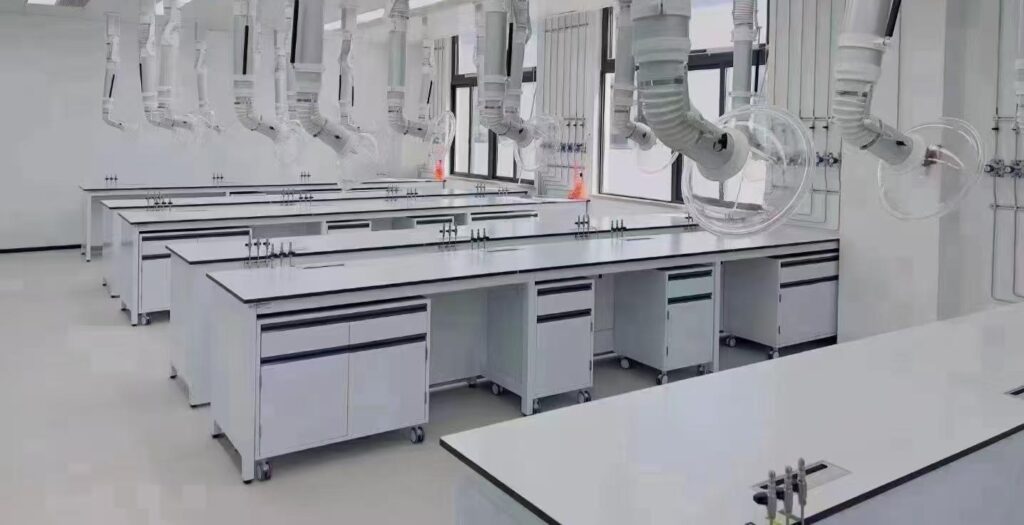
1. C-Frame Lab benches: The Space-Saver
C-frame lab benches is characterized by its relatively simple structure and high flexibility. In the layout adjustment is extremely convenient, so it is especially suitable for those who need to frequently change the laboratory layout of the place, C-frame lab benches can easily adapt to different experimental scenarios and make corresponding adjustments in the operation process.
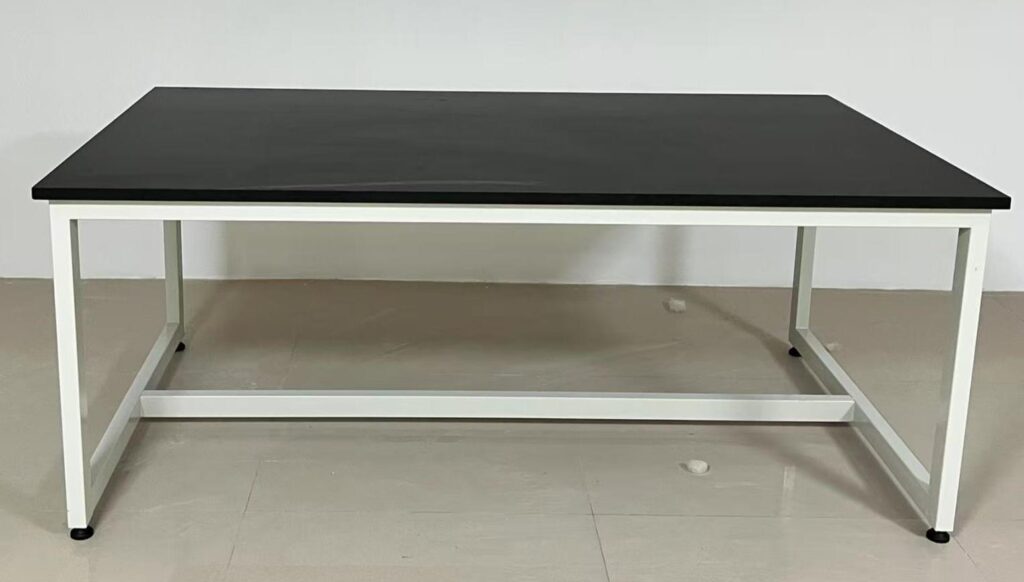
Structure:
- Single vertical support at each corner of the C-frame lab benches (“C” shape on the side)
- Open leg design below the tabletop.
Perfect For These Lab Zones:
- Teaching Labs: Students need leg space.
- Analytical Stations (HPLC, GC): Access cables/pedals easily; moderate weight.
- Mobile Workflows: C-frame lab benches pair with wheeled instrument carts.
- Tight Spaces: Corner units or narrow aisles.
Pros:
- ✅ Maximizes legroom – no crossbars obstructing feet.
- ✅ Lower cost – less material required.
- ✅ Simple structure – flexible and changeable, can be arbitrarily combined.
- ✅ C-frame lab benches are available in hanging and push cabinet configurations for easy installation and removal.
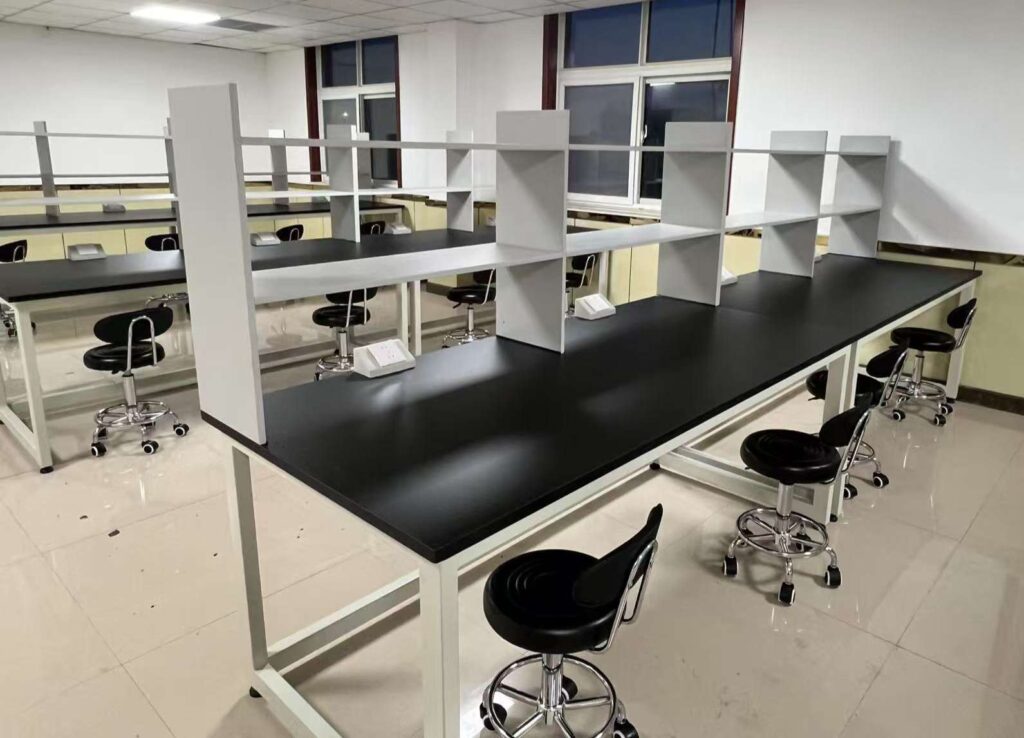
Disadvantages of C-Frame Lab Benches:
- ❌ Reduced stability for ultra-heavy loads (e.g., 300kg+ reactors).
- ❌ Less mounting space for accessories (shelves, clamps).
Best Uses:
- Teaching labs, analytical testing stations, or labs with frequent layout changes.
2. H-Frame Lab benches: The Heavy-Duty Choice
H-frame lab benches is both beautiful and generous, and its outstanding advantage lies in its excellent load-bearing performance. With this feature, it is very suitable for the need to place large-scale precision instruments in the laboratory occasions, H-frame lab benches can stably carry a variety of heavy equipment, for the smooth progress of the experiment to provide solid and reliable support.
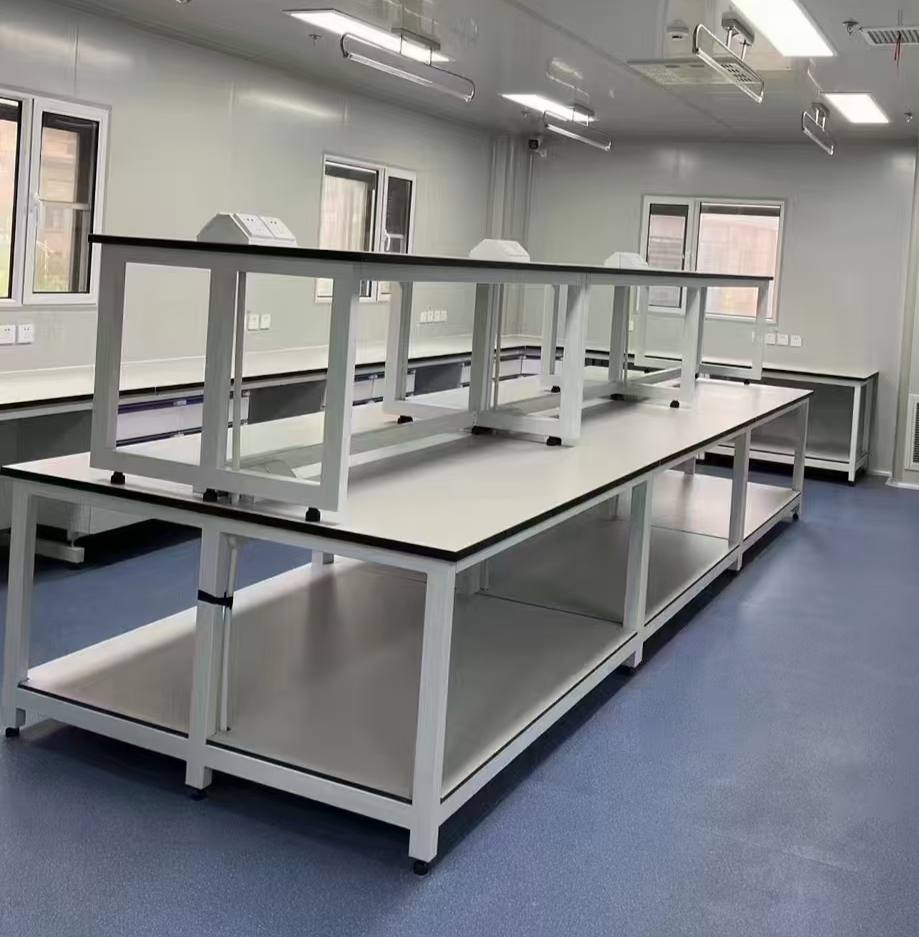
Structure:
- The two vertical supports on each side of the H-frame lab benches are connected by a horizontal crossbar (“H” shape).
- Creates a rigid box-like frame.
H-Frame Lab benches perfect For These Lab Zones:
- Labs using heavy machinery (HPLCs, autoclaves, large reactors).
- High-vibration procedures (shakers, centrifuges).
Pros:
- ✅ Superior load capacity (up to 500kg+/bench).
- ✅ Enhanced stability – resists shaking/torsion.
- ✅ H-Frame Lab benches can be configured with additional accessory shelves, outlets, suspension cabinets or fume hoods.
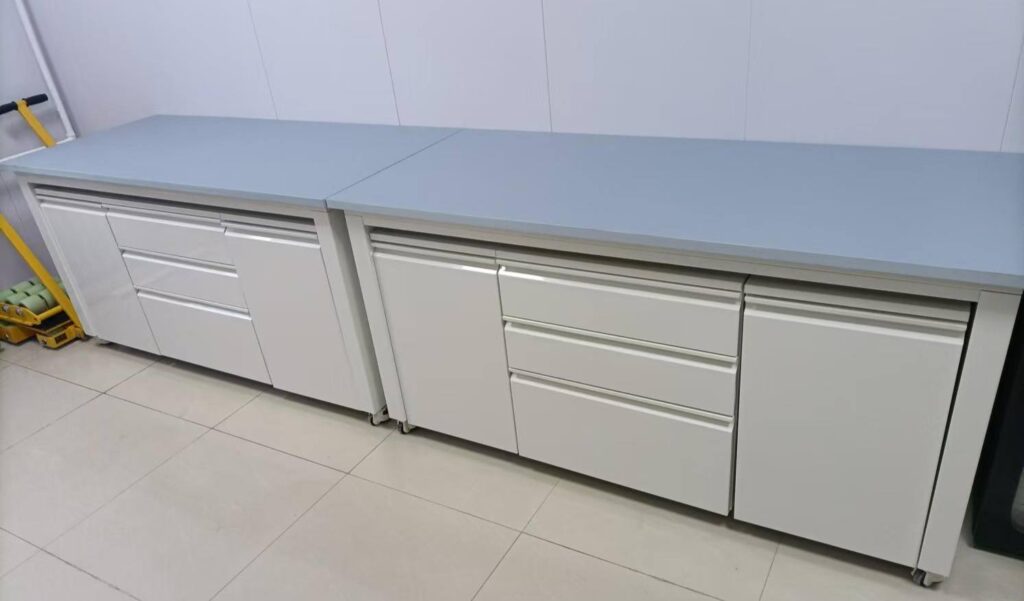
Cons:
- ❌ Reduced under- lab benches clearance – crossbars limit leg space.
- ❌ Higher cost (20-30% more than C-frame).
Best Uses:
- Synthetic chemistry, high-pressure labs, or BSL-2/3.
Key Comparison Table
| Feature | C-Frame Lab benches | H-Frame Lab benches |
|---|---|---|
| Max Load Capacity | ≤ 300 kg | ≥ 500 kg |
| Stability | Good for routine work | Excellent for heavy/vibratory loads |
| Accessory Mounting | Limited | Extensive (crossbars as rails) |
| Legroom | Unobstructed | Reduced by crossbars |
| Spill Cleanup | Easier (open design) | Harder (traps liquids) |
| Cost | $-$$ | $$$ |
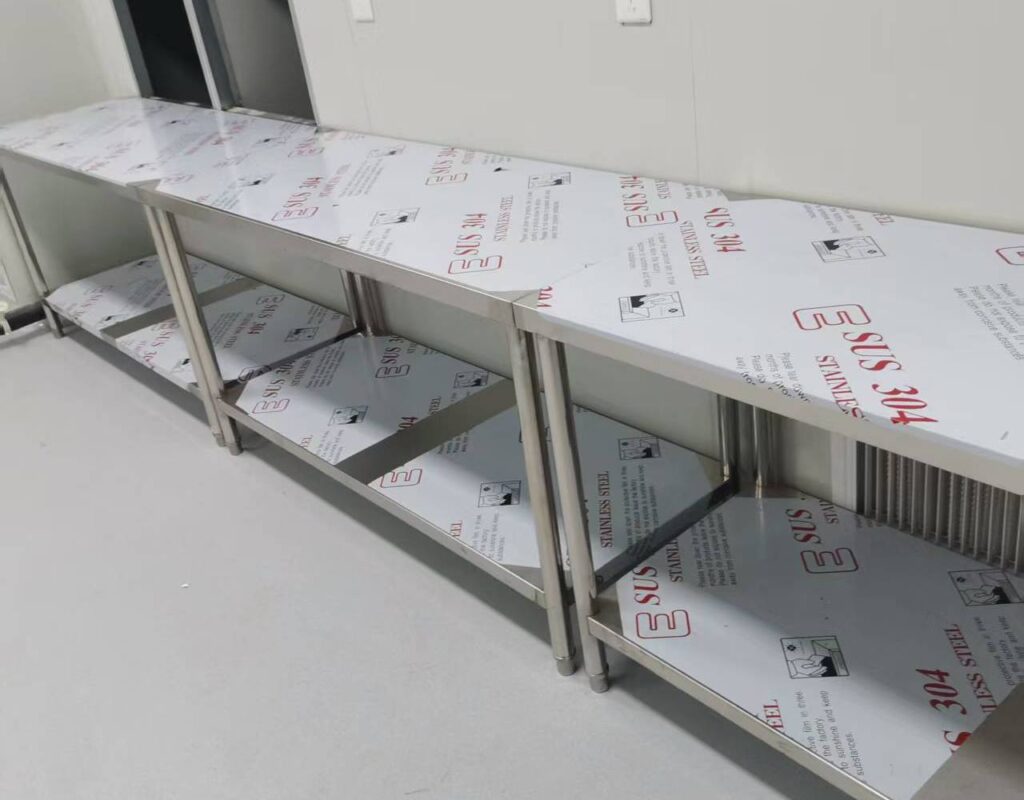
Safety First: Chemical Lab Essentials
Both types of C-frame lab benches and H-frame lab benches must be included:
- Corrosion-resistant materials: 1.0-1.5MM thick steel frame, epoxy Spraying/phenolic tops.
- Stainless steel frame lab benches: 1.0-1.5mm thick 304 or 316 stainless steel, corrosion resistant and clean.
- Gas/water lines in covered rear channels.
- Ventilation: Overhead hood mounts or extractor arm bases.
Avoid aluminum frames – they corrode quickly in acidic and alkaline environments and are very low for load bearing!
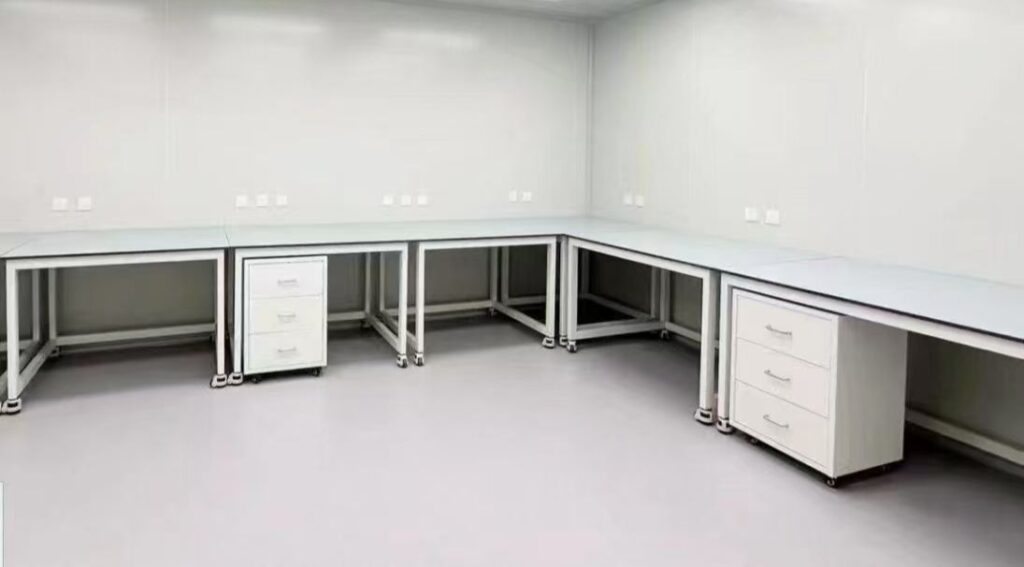
Which Should You Choose?
- Pick C-Frame lab benches if:
- Your lab handles moderate-weight equipment.
- Flexibility and floor space are priorities.
- Budget constraints exist.
- Pick H-Frame lab benches if:
- Heavy instruments (>300kg) or high-risk procedures are used.
- Permanent, vibration-free setups are critical.
- Custom accessories (shelves, shields) are needed.
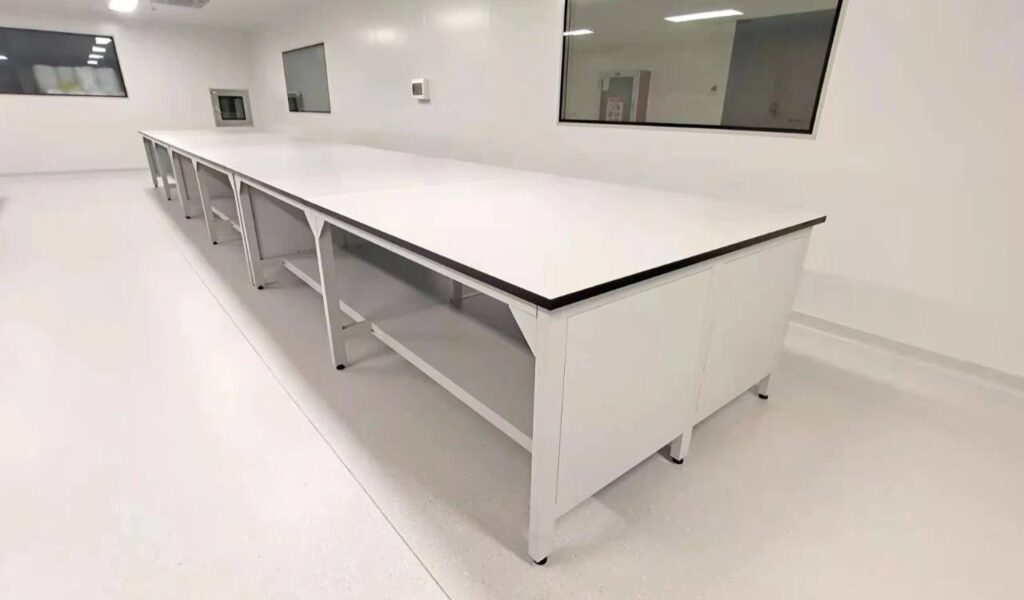

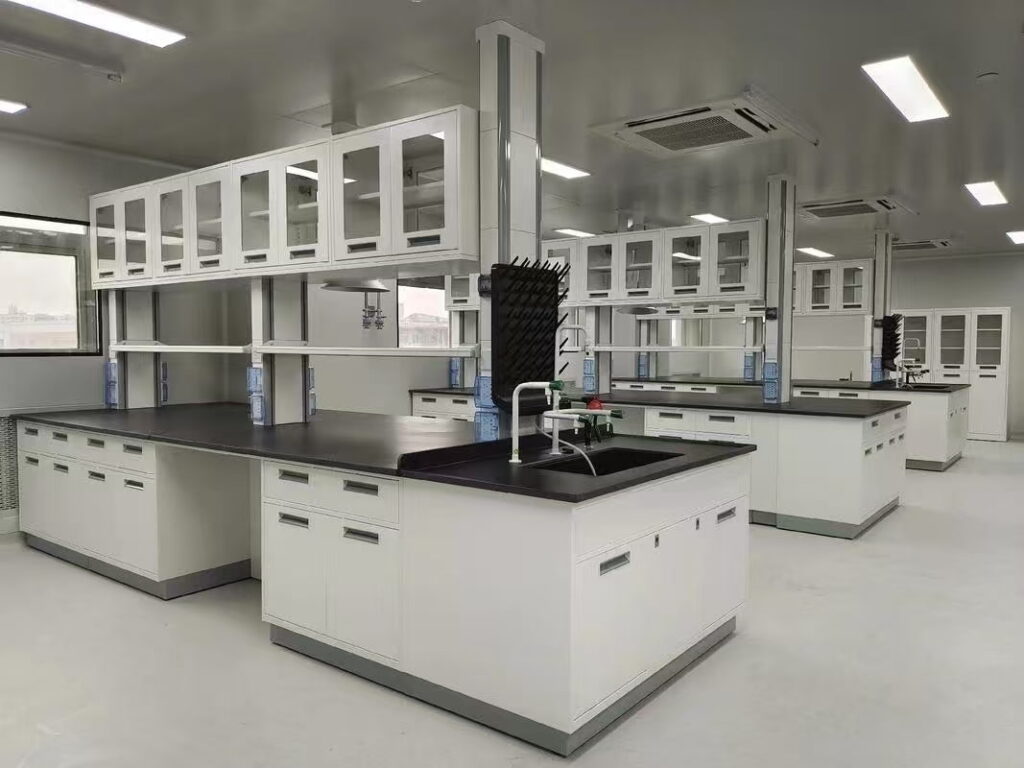
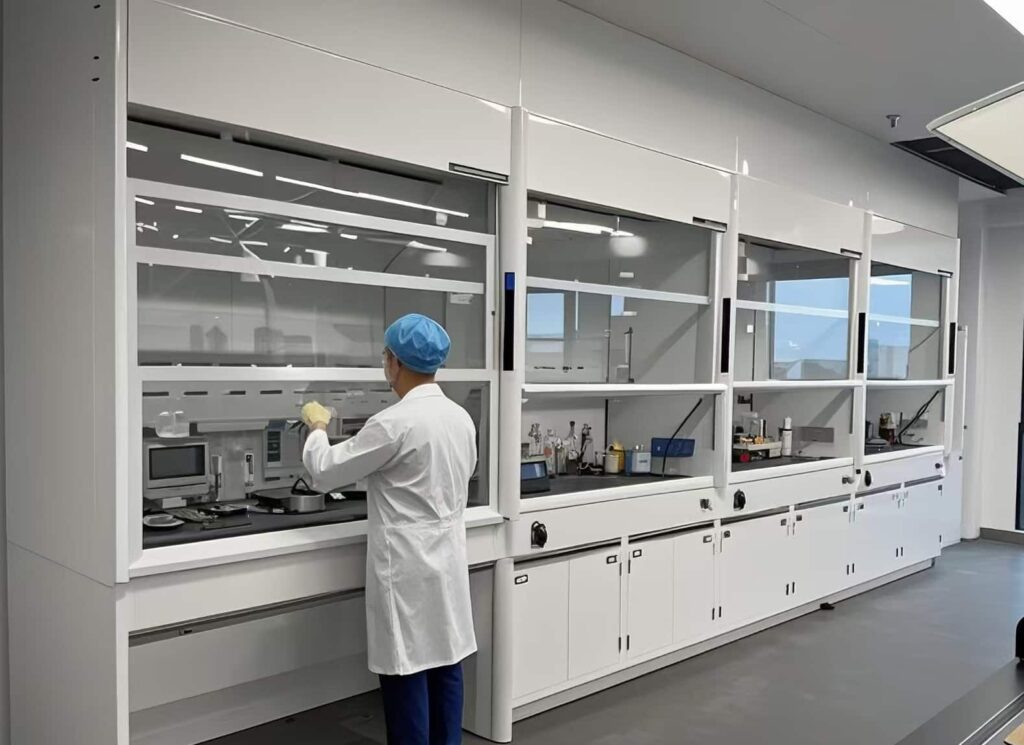

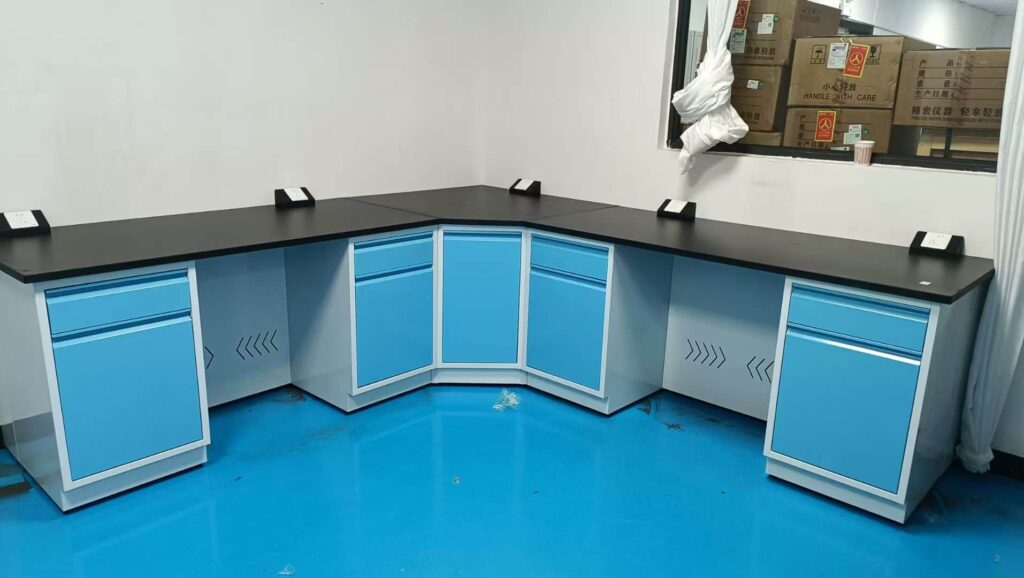
I like this blog very much, Its a rattling nice spot to read and get information. “Never hold discussions with the monkey when the organ grinder is in the room.” by Sir Winston Churchill.
Greetings from Ohio! I’m bored to tears at work so I decided to check out your site on my iphone during lunch break. I enjoy the information you provide here and can’t wait to take a look when I get home. I’m surprised at how quick your blog loaded on my cell phone .. I’m not even using WIFI, just 3G .. Anyhow, fantastic blog!
Hello. magnificent job. I did not expect this. This is a fantastic story. Thanks!
I enjoy your work, thankyou for all the great posts.
Wow, superb blog layout! How long have you been blogging for? you made blogging look easy. The overall look of your site is wonderful, let alone the content!
I like what you guys are up too. Such clever work and reporting! Keep up the superb works guys I?¦ve incorporated you guys to my blogroll. I think it’ll improve the value of my site 🙂
I love it when people come together and share opinions, great blog, keep it up.